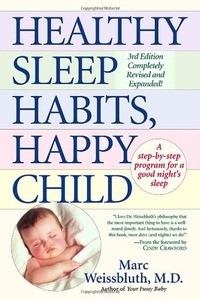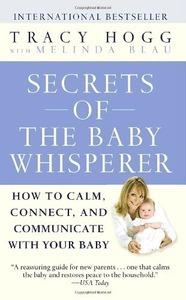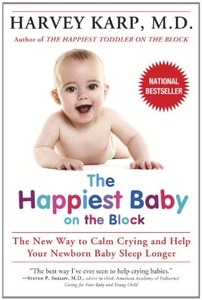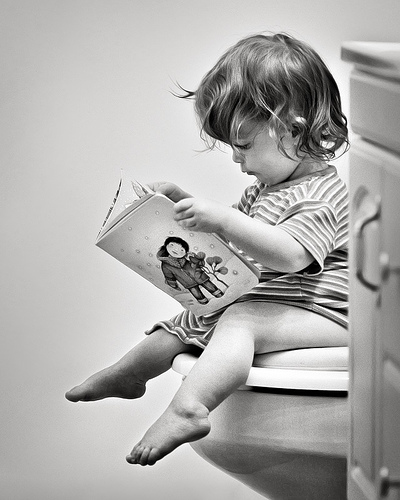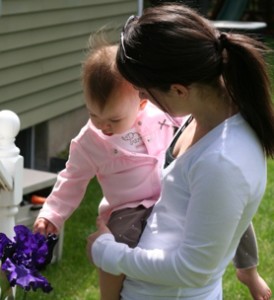Unlike many teachers you’ve had before, I will admit my faults. The first one you should know is that I am a total control freak. Nothing can make your world spiral out of control more than sleep deprivation.
So here are some bibles–I mean books–on sleep training that were invaluable to me along with my key takeaways from each one.
1. Healthy Sleep Habits, Happy Child
Key lesson: Look for the sleepy signs and follow a routine.
We had to learn Emma’s sleep patterns by watching carefully for signs that she was getting tired (rubbing her eyes, yawning, etc.). The moment we noticed a sleepy sign, we began her sleep routine: carrying her up to her room and rocking her for 5 minutes while singing “My Favorite Things” (oh, yes, I can sing it with various accents and even like a rap song). The trick is to repeat the same steps, in the same order, every single time without fail.
After doing this for a few days we noticed a pattern develop. Emma’s sleepy signs would show up around the same times each day, so we were able to get on a schedule, which made planning our days much easier. She was sleeping through the night by 6 weeks!
Thanks Dr. Weissbluth!
(Footnote: one of the absolute best things about this book is that it’s broken down by age, so you can read chunks at a time. We found ourselves referring back to HSHHC multiple times as Emma grew and changed.)
2. The Baby Whisperer
Key Lesson: Independence is not neglect.
Anything that takes away a bit of the mom-guilt is great advice to me! But this one really resonated. Meet your baby’s needs and give her comfort, but once her needs are met, allow her to fall asleep on her own. Yes, it was very hard not to get up at every whimper and cry, but I firmly believe, much like you and I, babies go through cycles of sleep throughout the night. They stir, they wake (and may cry) but need to learn to fall back to sleep without constant comfort. This one is definitely in the category of thinking with your head (because my heart most certainly would have picked her up every time :-)).
3. Happiest Baby on the Block
Key lesson: Use the 5 S’s.
The three I remember–because they worked–are to rhythmically repeat “shhhh” (it mimics the sound they hear in the womb) and sway (easy to do with the perfect glider) and swaddle (think baby burrito).
The other two S’s are suck and side-stomach, which we didn’t personally use, but might work for you.
Homework
Keep a daily activity sheet to log sleep. We wrote down every nap and of course bed time and waking. This was so critical in helping us understand what was working and if Emma’s sleep patterns were changing.
Here’s to sleep!
Image credit (cc): http://www.flickr.com/photos/minoru_ntt


